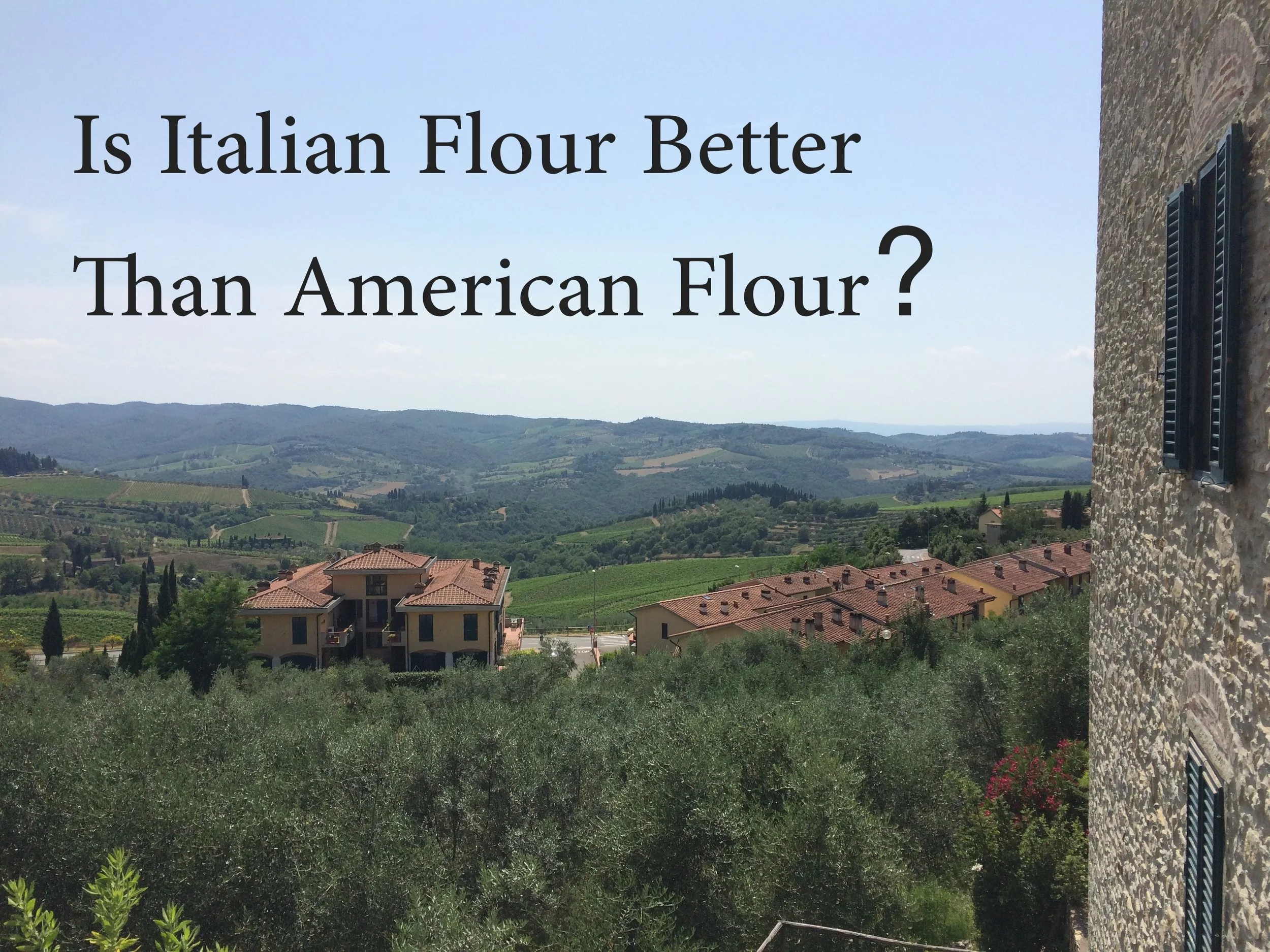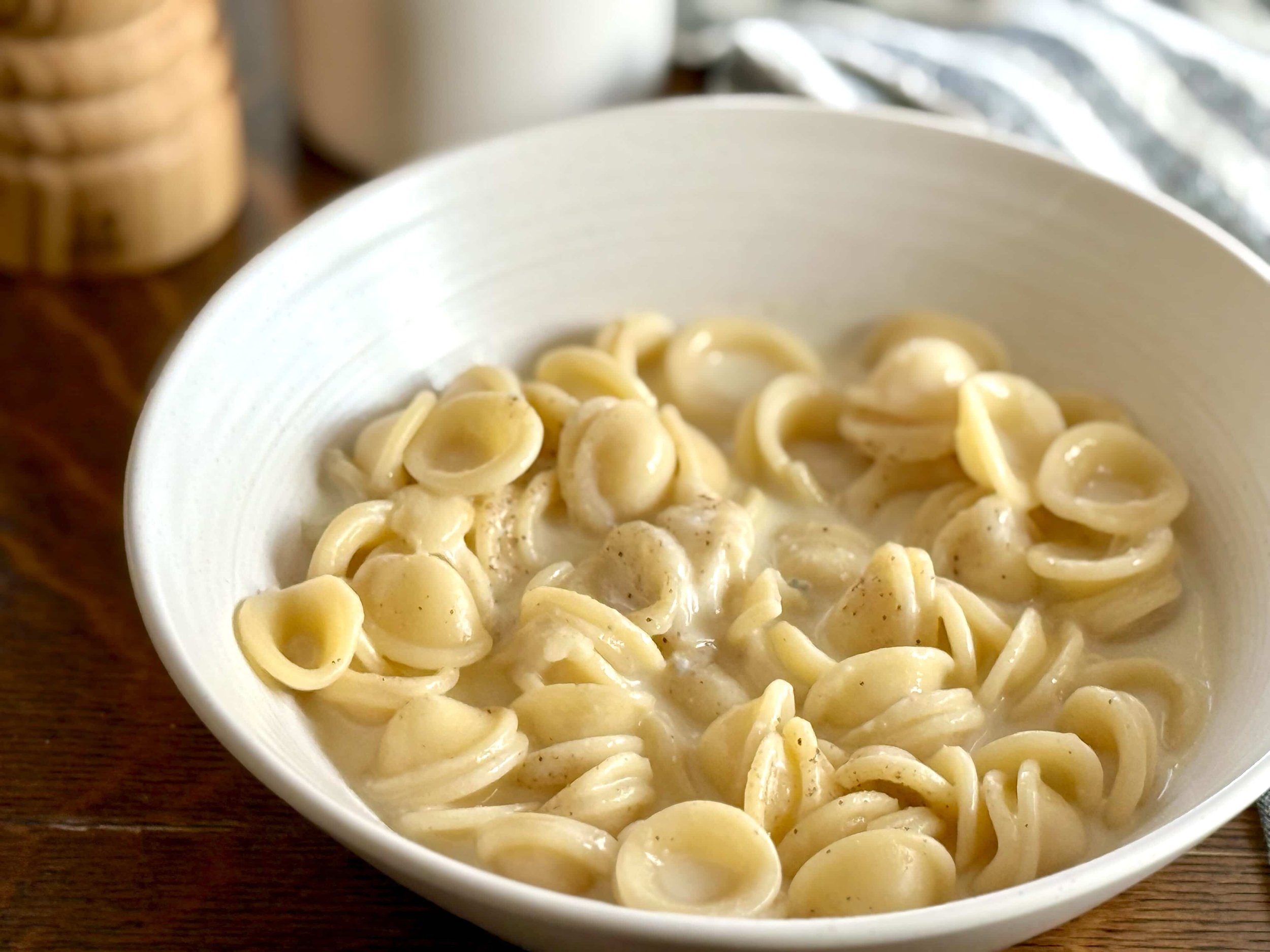Navigating the Italian Flour Section - FARINA part 1
/Last Updated April 4, 2025
Farina in Italia
You’ve recently moved to Italy, still walking around completely starry-eyed from the beauty of the country, and are about to go grocery shopping because you realize, unfortunately, you can’t order pizza every night. So you decide to make it at home, crust and all. (Sneaky, aren’t you?) When you arrive in the flour section, you realize that it’s going to be a touch more than just translating “flour” to “farina” and trying to figure out which ones are all-purpose, cake flour, and bread flour. Instead, you find not only types of flour, but numbers to boot. What does it all mean? How are you supposed to use flour in Italy?
Or maybe you’ve lived in Italy for awhile and have been experimenting with the different flours with results ranging from baked goods turning out great, turning out awful, or turning out…different. This was me the first year of my life in Italy. Add on top of that ovens that don’t have temperature gauges, are strange sizes, or only cook from the bottom, you get some interesting results. Can’t I just buy a dang bag of all-purpose flour without having to figure out all the factors in this Italy baking equation?!? No, Jenny. No you cannot.
After talking to people (is there therapy for bakers? Can that be a thing?) and other expats here, reading many articles online, and of course my own many trials and error, hopefully this post will help demystify the flour section a bit for you! Reading this blog post “All About That Wheat Flour”, which is part 2, on the six categories of wheat will also help you, as some of that will then be helpful to understand (or translate) in Italian. Let’s start with a quick Italian flour cheat sheet, then keep reading to understand the properties of the Italian flour better.
Where Can I Find Italian Flour in the USA?
For my American readers, I have linked several sites below where you can find some Italian flours as talked about below for your baking adventures Stateside. I’ve gotten quite a few inquiries recently about where to find Italian flours in America, so I figured I’d compile some of my favorite sources right here where it’s convenient. I wish it was easier to find quality and cheap Italian flours in the States, but it’s rather tricky, honestly. Some come from Amazon, trusted and easy for shipping, but they don’t have the biggest variety so I’ve tried to include a variety of sites that combine brands I’ve used both here and in Italy, while also trying to find the better prices. If anyone has some good sources I’m not aware of, I’d love to hear and be able to share! Please note that prices tend to fluctuate.
This post may contain affiliate links. If you make a purchase using these links, Jennyblogs may receive a small commission, at no extra cost to you. This helps to support Jennyblogs. Where possible, links are prioritized to small businesses and ethically and responsibly made items. For further information see the privacy policy. Grazie!
Italian Flour Baking Cheat Sheet
For cookies, bars, cakes/cupcakes, biscuits, scones, or anything that needs a tender crumb, use Farina di grano tenero, 00. This is your “cake flour” but is used for a wide variety of things including pizza and pasta, so really is like the “all-purpose flour” of Italy. When in doubt, try the 00.
Antimo Caputo and also in a 55lb. bag
King Arthur 50lb bag of 00 - Wheat grown in America and non GMO
For bread, I recommend starting off with Farina di Manitoba, grano tenero, 0; this is similar to standard American bread flour. As you progress, you can start to add in Farina di grano duro, or Semola Rimacinata di grano duro. These flours will have a different feel and look to them as you knead your bread and in the final product, which is why I recommend starting out with just a small portion, around 25% or less of the total flour, in your recipes until you know how they act.
Farina d’America - cheaper price, free shipping over $100
Farina Explained
Grano Duro and Grano Tenero
Hard wheat and soft wheat, or as they are known here in Italy, grano duro and grano tenero, will be written on just about every bag of standard flour.
Breads and pastas usually use grano duro, or hard wheat, because of the higher gluten content. Most sweets and cakes use soft flour or grano tenero. Keep in mind however that there are some breads made with soft flour, as you will find in the bakery section at your local grocery store, or a combo of both soft and hard flour.
Flour Grinds: 00, 0, 1, 2
This is pretty straightforward: The smaller the number, the finer the flour. And in your local grocery store, 00 and 0 will be the most common by far. They don’t have every variety of flour in every grind, so the work is mostly already done for you. If you know you want a soft/grano tenero, you’ll probably find only 0 and 00. You won’t have to decide between a soft/grano tenero 00, 0, 1, or 2.
Semola and Semola Rimacinata
Semola, also know as pasta flour or sometimes semolina in the States, comes from durum wheat and has a yellowish hue. It is usually grown in the spring and is the hardest of all wheat, which makes it ideal for pasta and bread making. In Italy it comes in two primary forms: Semola and Semola Rimacinata (reground, or twice ground, making it finer). Semola is used for eggless pasta and Semola Rimacinata is used for egg pasta.
Great River Milling Semolina (Semola in the States is usually called Semolina, I know, confusing.)
Farina di Manitoba
Named after the Canadian province of Manitoba, this is the “bread flour” of Italy. This one always threw me for a loop, because it is a grano tenero, yet has a high gluten content. Because of its unusual characteristics, it is often categorized as a “special” flour. It is often used in the fine grind of 0 and is great for breads that require long-leavening periods, such as French Baguettes, pizza, and breads that use natural yeast or lievito madre.
Farina d’America - cheaper price, free shipping over $100
Farina per Pizza, Pasta, etc.
Because Italy is the land of pizza, pasta, and bread, you will find plenty of bags of pre-mixed wheat varieties that are supposed to be perfect for rustic breads, or focaccia, or pizza, or pasta. I’ve never bought any of these because I’ve been preoccupied with figuring out how to use all the other flours, but I’m sure they’re great for their specific purposes!
Farina e Lievito
This would be the equivalent of the self-raising flour in the States. I don’t use this in the States nor in Italy, but I’ve read that it works well here! You could also make your own, adding 1 1/2 tsp of baking powder and 1/2 tsp salt per cup (120g) of flour. (I recommend using baking powder from the States as I’ve heard that the Italian baking powder/lievito in polvere does strange things.) I would use farina di grano tenero 00 if you’re planning on making biscuits or cookies.
Specialty Flours
There are also many specialty flours here to inspire your baking or aid your gluten-free needs. Some worth noting are saraceno (buckwheat), farina di riso (rice flour), farina di mais (cornmeal), farina d’avena (oat flour), teff, farina di ceci (chickpea/garbanzo bean flour), among others.
Happy baking and good luck with the farina Italiana and finicky ovens!




































